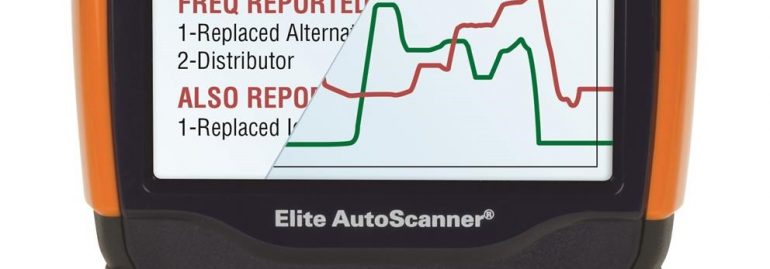What are fault codes? This article will discuss what a DTC (diagnostic trouble code) is and its significance. In addition, you’ll learn what a P0xxxx code means. You’ll also discover when a car might have a fault code. This is helpful information for owners and technicians alike. You can find out if you need to get your vehicle fixed. After all, it’s better to be safe than sorry!
Diagnostic trouble codes
You may have seen the check engine light on your car, but have no idea what it means. Diagnostic trouble codes, or DTCs, are a way to determine the cause of the light and pinpoint the problem.
Onboard diagnostics, also known as the OBD system, uses these codes to identify specific vehicle issues. These trouble codes indicate problems that require service or repair. There are two major types of DTCs: critical and non-critical.
The first type is used to determine emissions-related faults. The second type stores failures of the freeze frame.
Each of these three types of diagnostic trouble codes is a different kind of trouble code. The last two digits of each code define the actual fault. Because each code has a unique description, it can be difficult to determine which one is causing the trouble.
The good news is that a software called OBD Auto Doctor can help you diagnose and repair your vehicle’s trouble codes, as well as clear the check engine light. To get started, download the free OBD Auto Doctor software and try it out! You’ll be amazed at the results.
Diagnostic trouble codes are five-character codes that can be confusing. The first digit, or code name, indicates a car part fault. In other cases, the second digit, or hexadecimal digit, denotes a subsystem. For example, P0030 indicates a problem with the powertrain. The second digit, or code name, indicates a malfunction or issue with the ignition system. These codes can mean anything from a warning light to a complete engine failure.
Meaning of a DTC
If you’re having trouble diagnosing a car problem, you might want to know the meaning of a Diagnostic Trouble Code (DTC). DTC codes are used to report engine problems and are not manufacturer specific. In fact, the meaning of a DTC code varies from vehicle to vehicle. Here’s a breakdown of some of the most common DTCs and their meanings. A DTC code is made up of four digits. The first digit of a DTC is known as the “green digit,” which is used to inform the technician whether the code is generic or specific.
A DTC can represent various problems and is used for diagnosing and treating patients. The DTC can contain up to 500 different meanings, depending on the context and category.
To find the exact meaning of a DTC, consult a mechanic or go to an online source like Internet Slang. You may be surprised to learn that a DTC can be anything from a malfunction to a malfunctioning sensor.
Once you understand how to interpret a DTC, you’ll be able to identify the root cause of your car’s issues.
A DTC is a code generated by a vehicle’s on-board diagnostics system. A DTC indicates an issue and lets the owner know about it before it becomes a full-blown vehicle failure. Unfortunately, the DTC system isn’t perfect, but it gives the owner a huge advantage when it comes to repairing and maintaining their vehicle. You’ll be glad you did! The next time you see a DTC, be sure to pay attention.
Significance
You should know the signs and symptoms of the different types of fault codes your car may be experiencing, and understand the meaning of the ones you see. While some of them are generic, others are specific to your car’s model. For example, you should look for codes that indicate the presence of a faulty fuel injector or an inoperative distributor. In other cases, the problem could be something else altogether. In any case, knowing your car’s specific fault codes will help you identify the exact problem.
The DG Technologies diagnostic tool is capable of extracting fault codes from the vehicle’s network. The on-board computer diagnostic system stores these codes in response to a problem detected in the car. It usually stores the code when it detects a sensor reading that’s outside of normal range. When this happens, it’s important to determine whether the code is related to a recent fault, or to a more distant fault that has been present for a long time.
The main purpose of DTCs is to notify drivers of possible fault situations. The digits in the DTC stand for SPN (fault location number), FMI (fault type), and OC (occurrence count).
The SPN stands for the fault location number, while FMI refers to the defect itself. The OC increases when a defect moves from its inactive to active state. This is why the OC is so important in interpreting fault codes.
While most drivers do not realize it, a DTC (disaster data code) consists of alphanumeric and numeric characters. They indicate which components are causing the problem, and can make it easier to diagnose the problem. For example, Code P0303 indicates a misfire or ignition problem in Cylinder 3.
Meaning of a P0xxxx code
The P0xxx code is a generic warning that applies to any vehicle. It’s not specific to a particular make and model, though. In general, P0xxx codes are related to the transmission, ignition, or fuel system. The last two digits refer to the system that’s malfunctioning. A code chart will show specific details for each code, allowing you to determine what it means and how to resolve the issue.
A P0 code indicates a problem with the coolant thermostat, while a P0128 code means a problem with the fuel metering system. The third digit in the code sequence indicates the location of the problem. A P0128 code, for example, indicates that a fuel or air metering system is malfunctioning. It could also indicate that a coolant thermostat is failing. In this case, you should contact your car manufacturer.
Symptoms of a P0xxxx code
The symptoms of a P0xxxx code include an illuminated check engine light and a poorly running engine. If you have this code, the check engine light may stay on while you drive, despite your efforts to restart it. While the code itself is not a serious problem, it can cause your car to stall, which may be dangerous depending on where you’re traveling. In order to diagnose a P0006 code, you need to have a scan tool that can read factory sensor readings and a voltage meter.
A P0xxx code may be caused by a number of problems, with the majority of these issues related to your car’s powertrain. A malfunction indication lamp will tell you that the engine control unit (ECU) is malfunctioning.
This may be caused by a malfunctioning spark plug wire, metallic dust, or a faulty crankshaft position sensor. Ultimately, a P0xxx code should be investigated by a professional mechanic.






